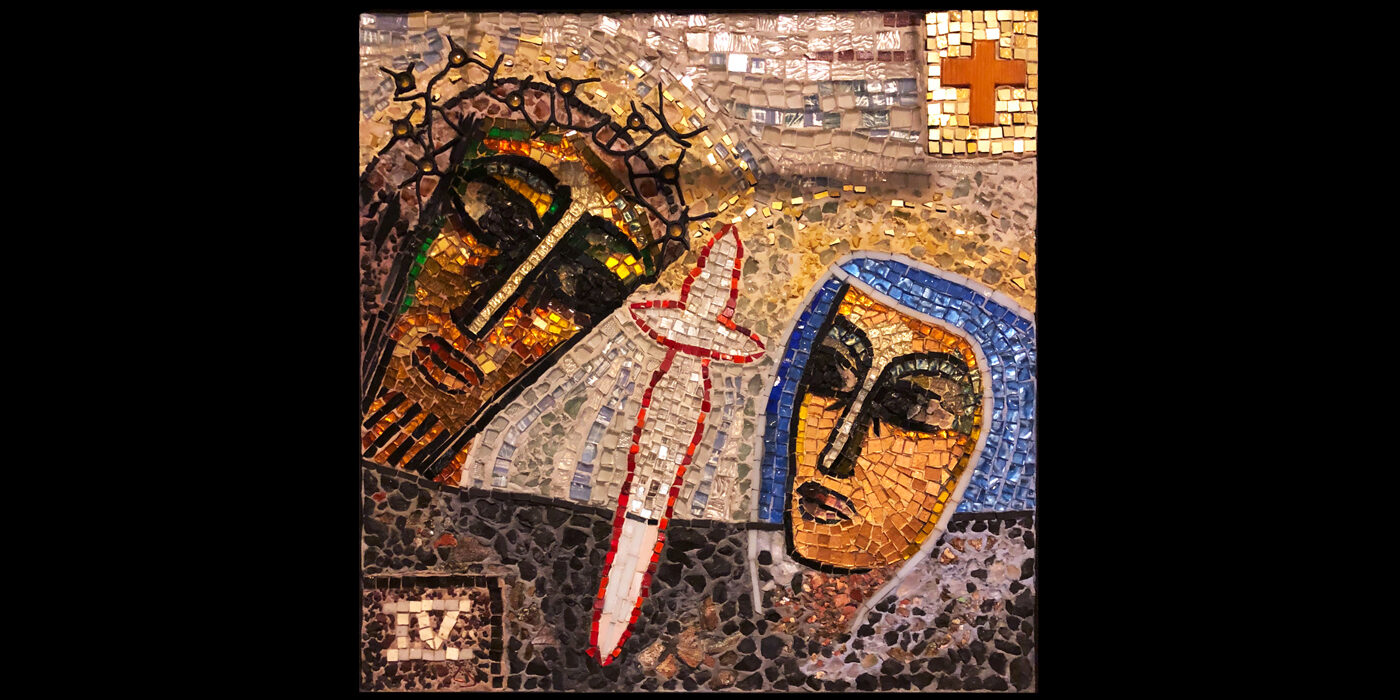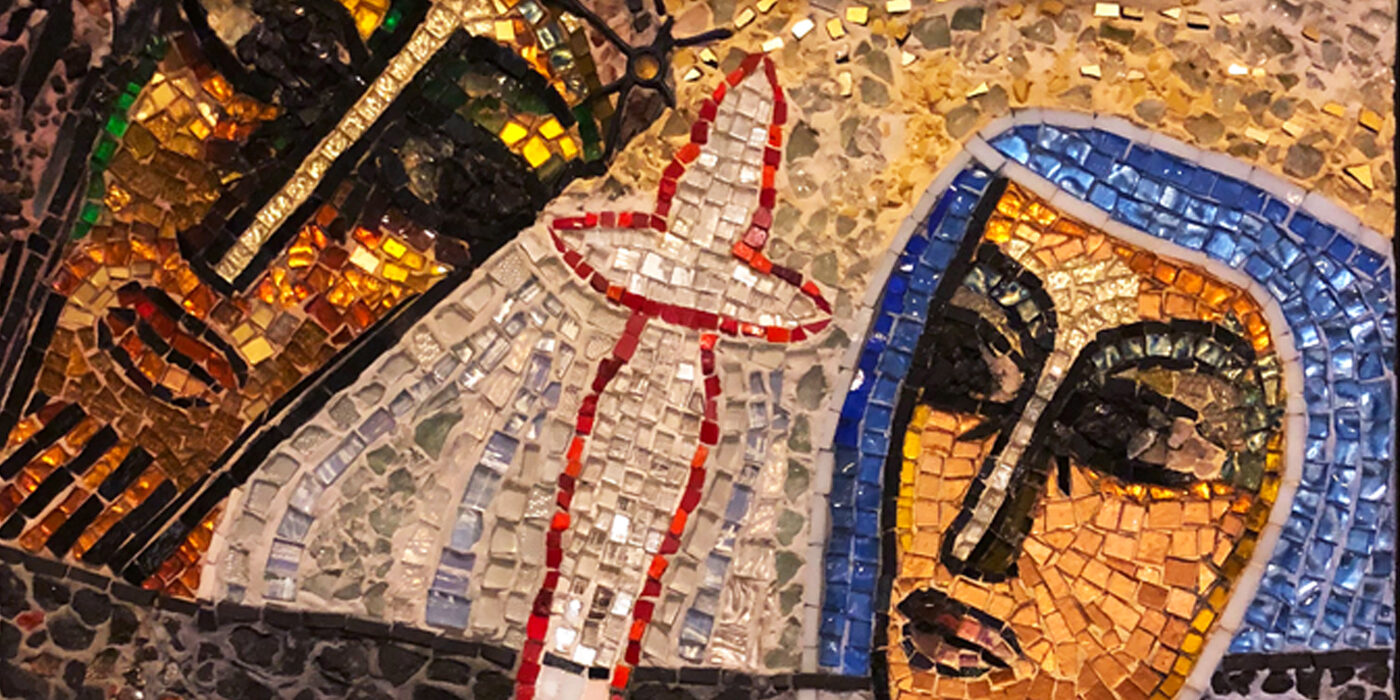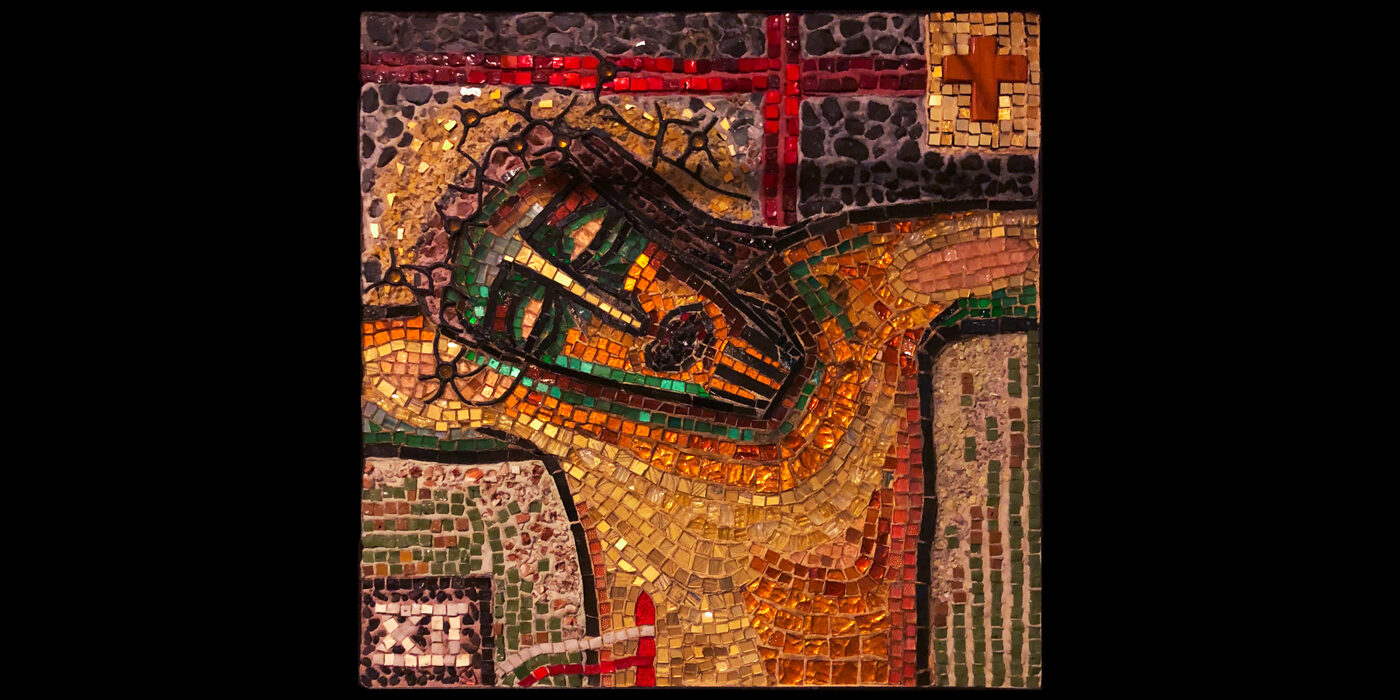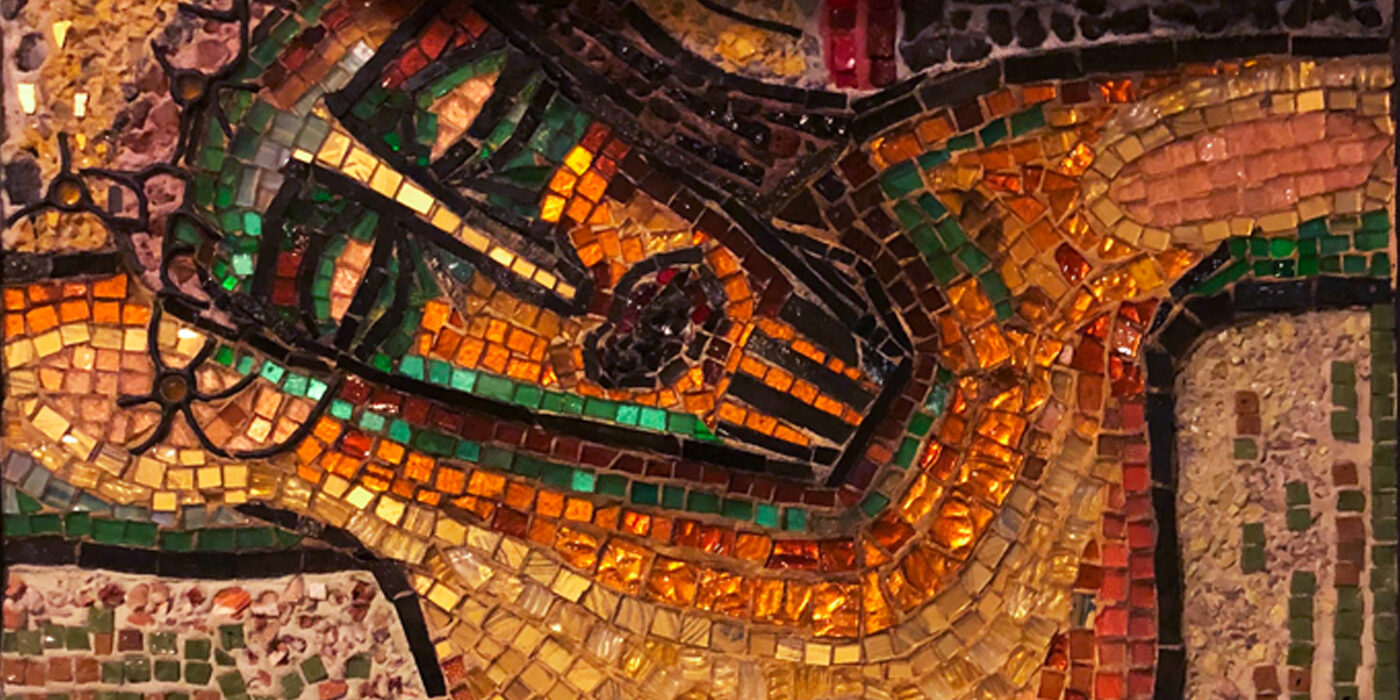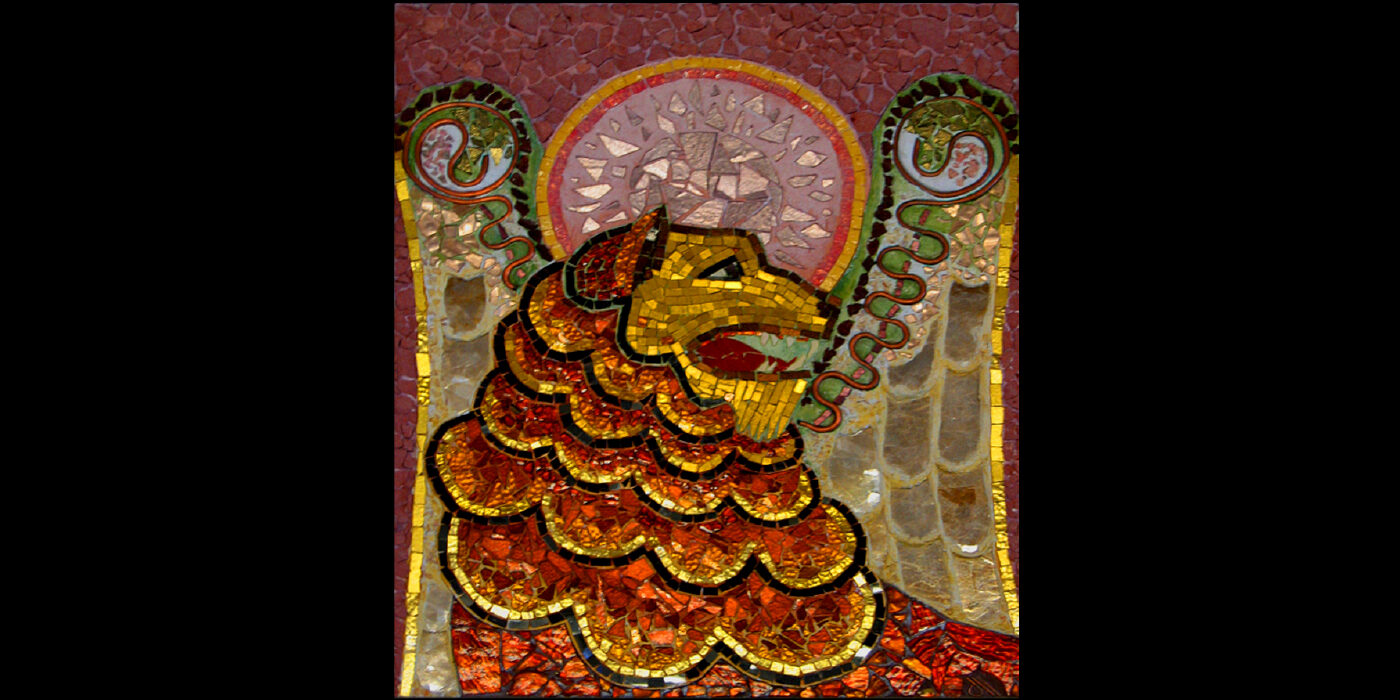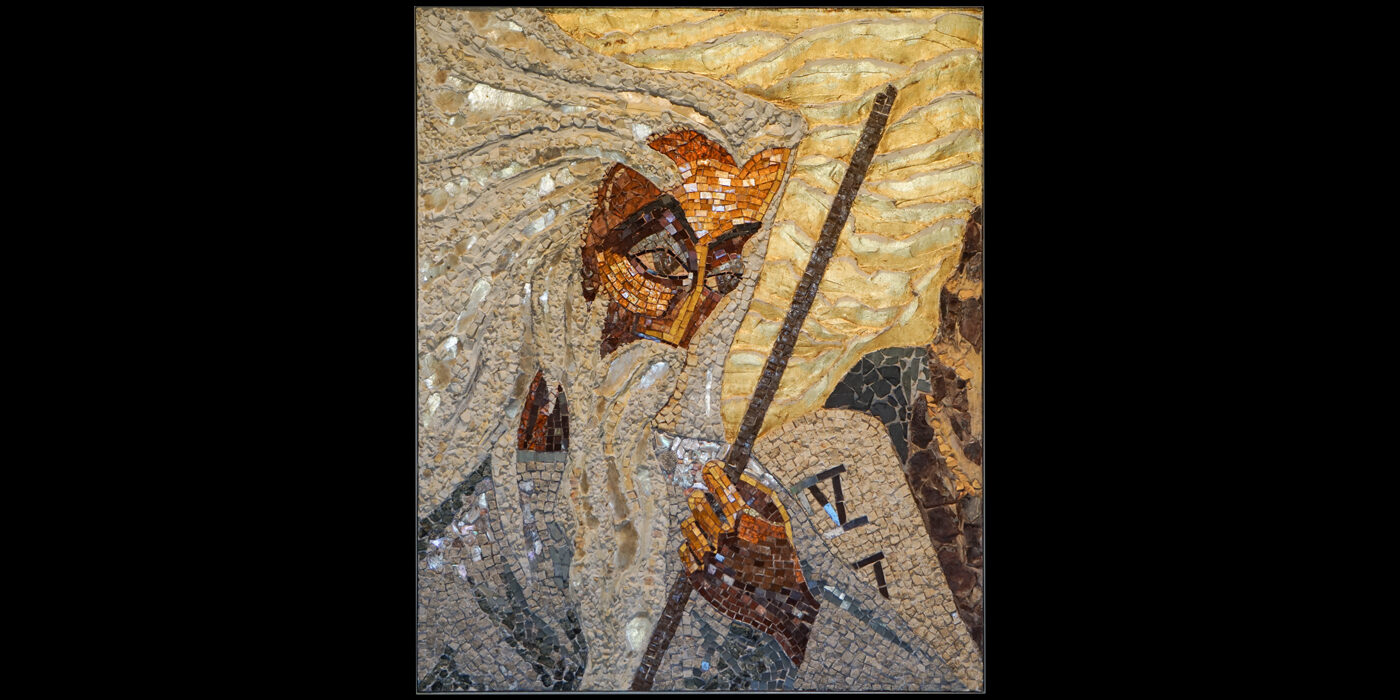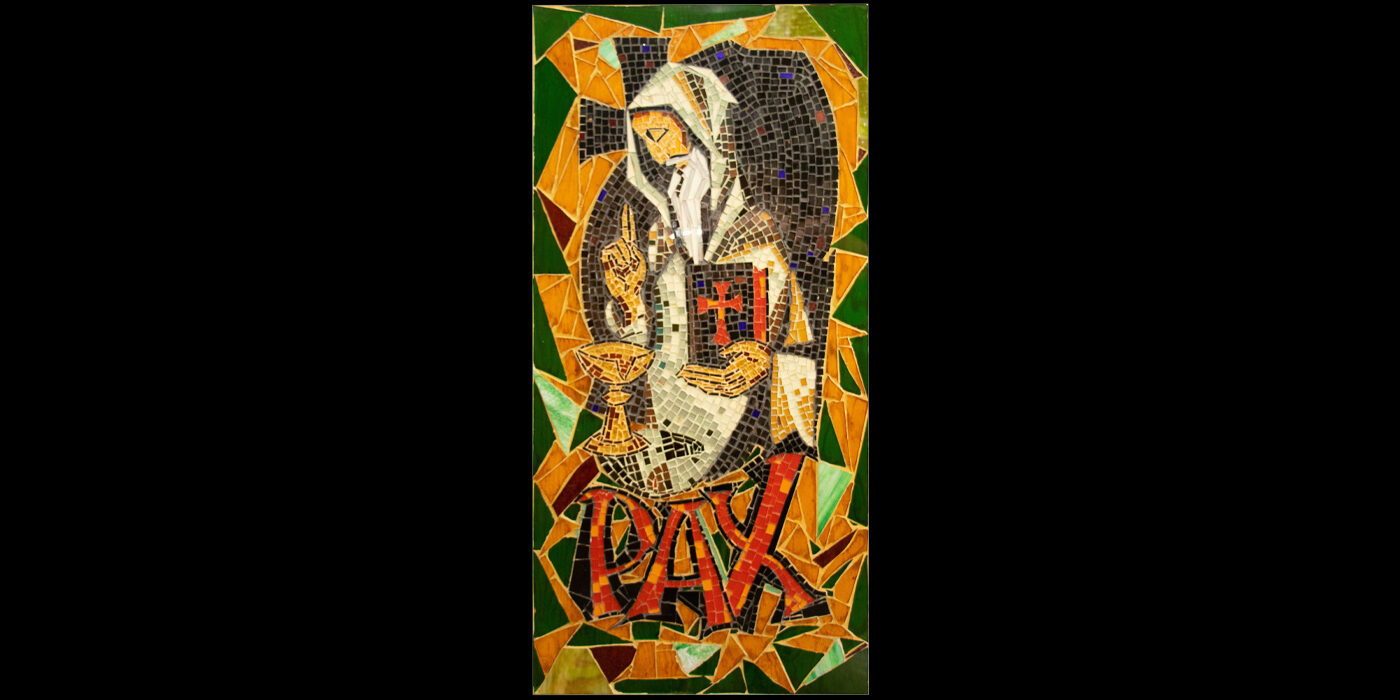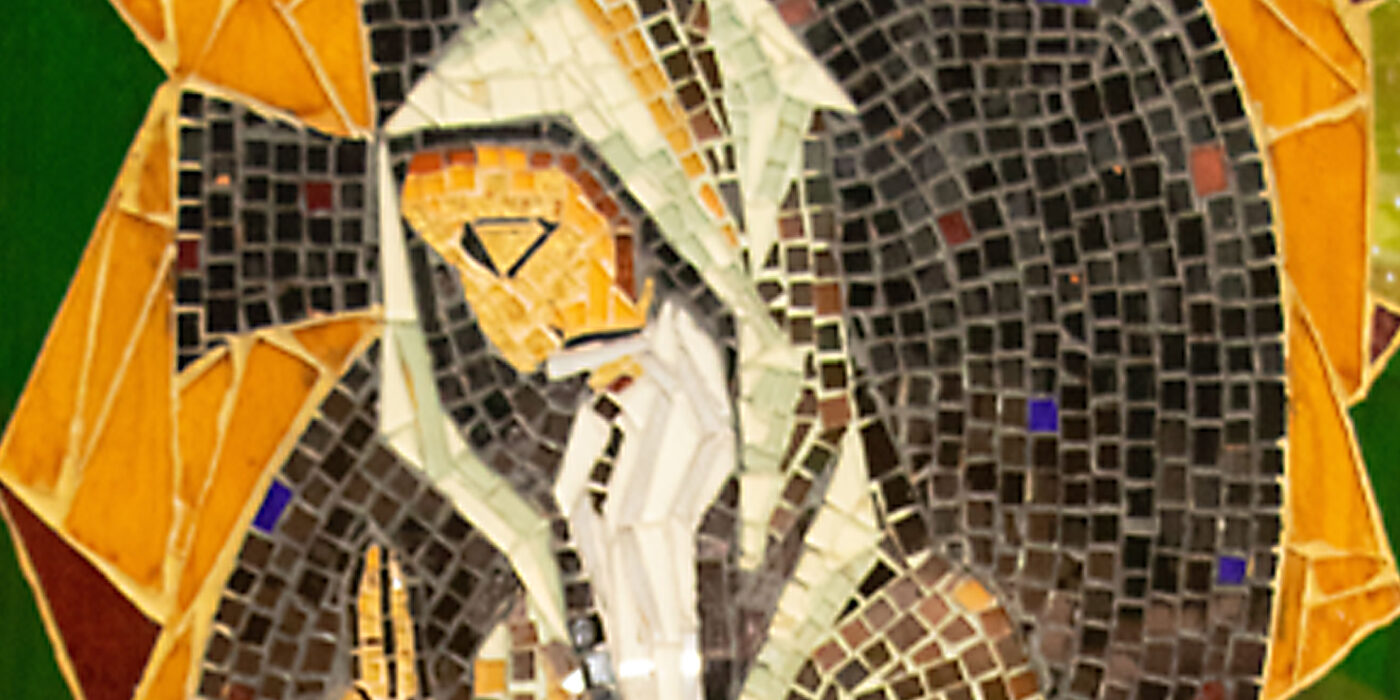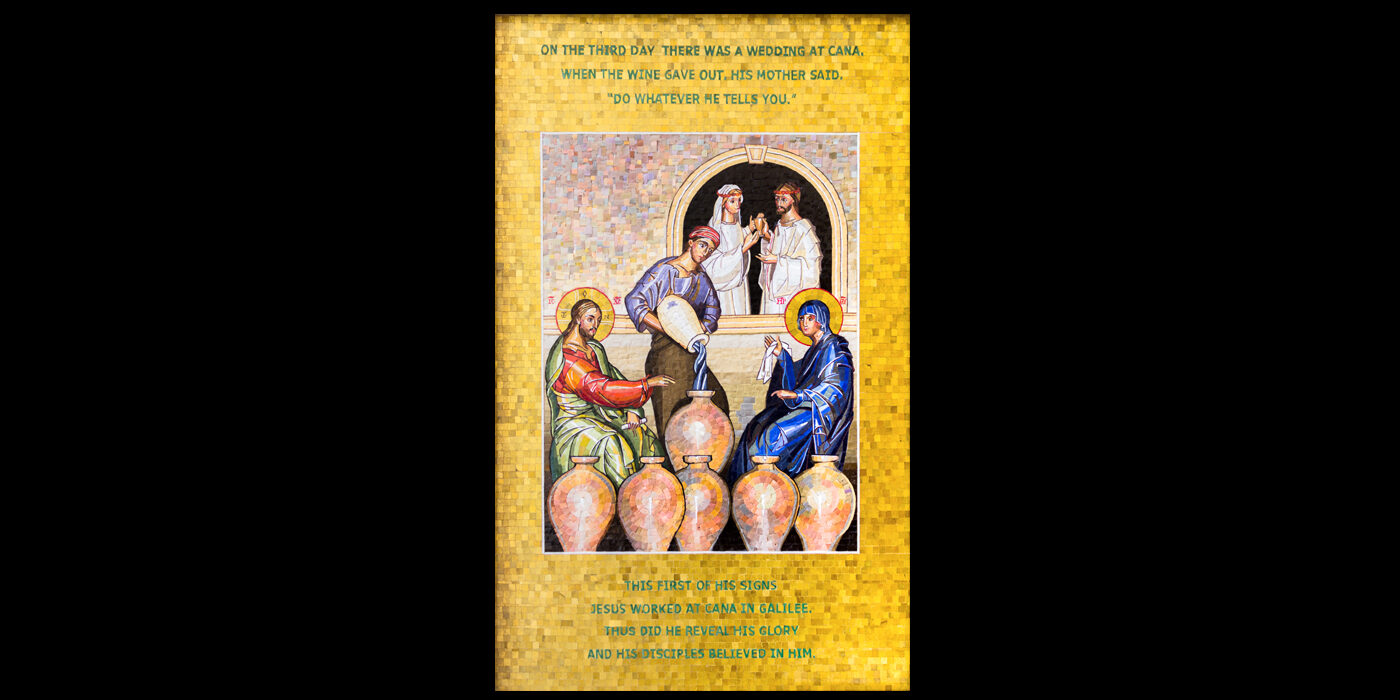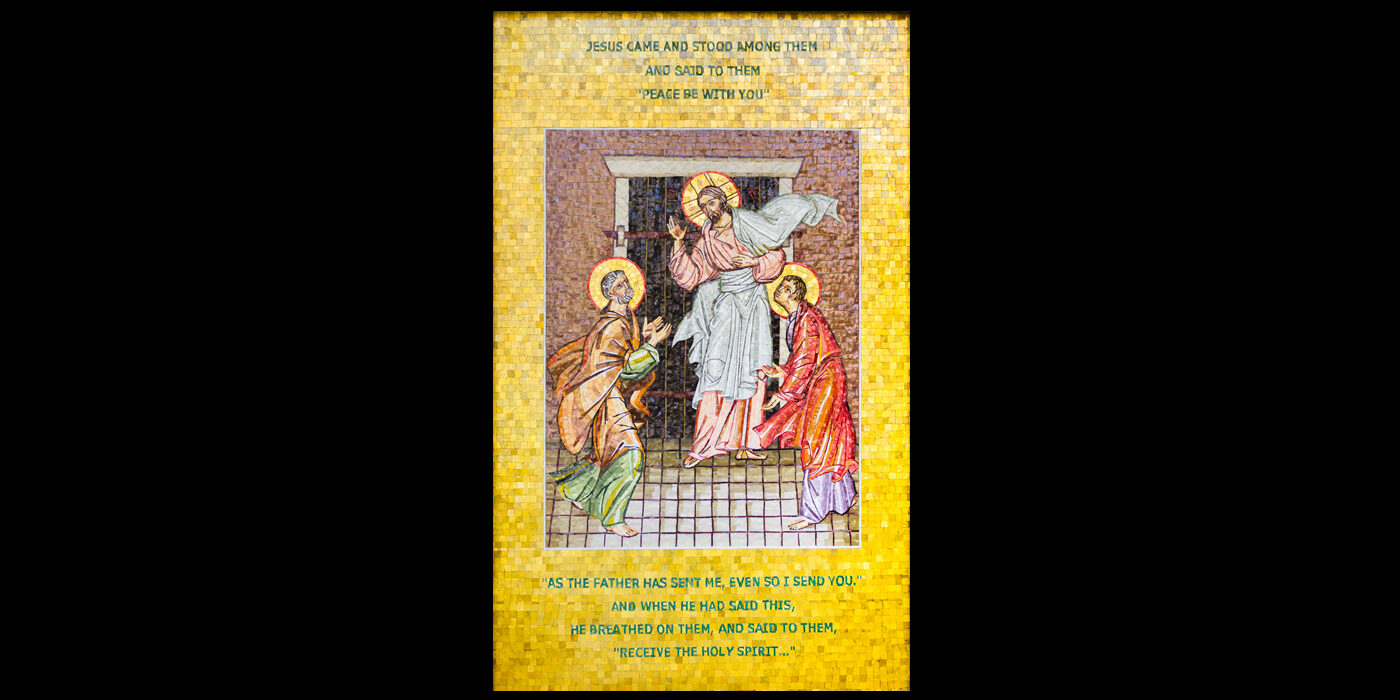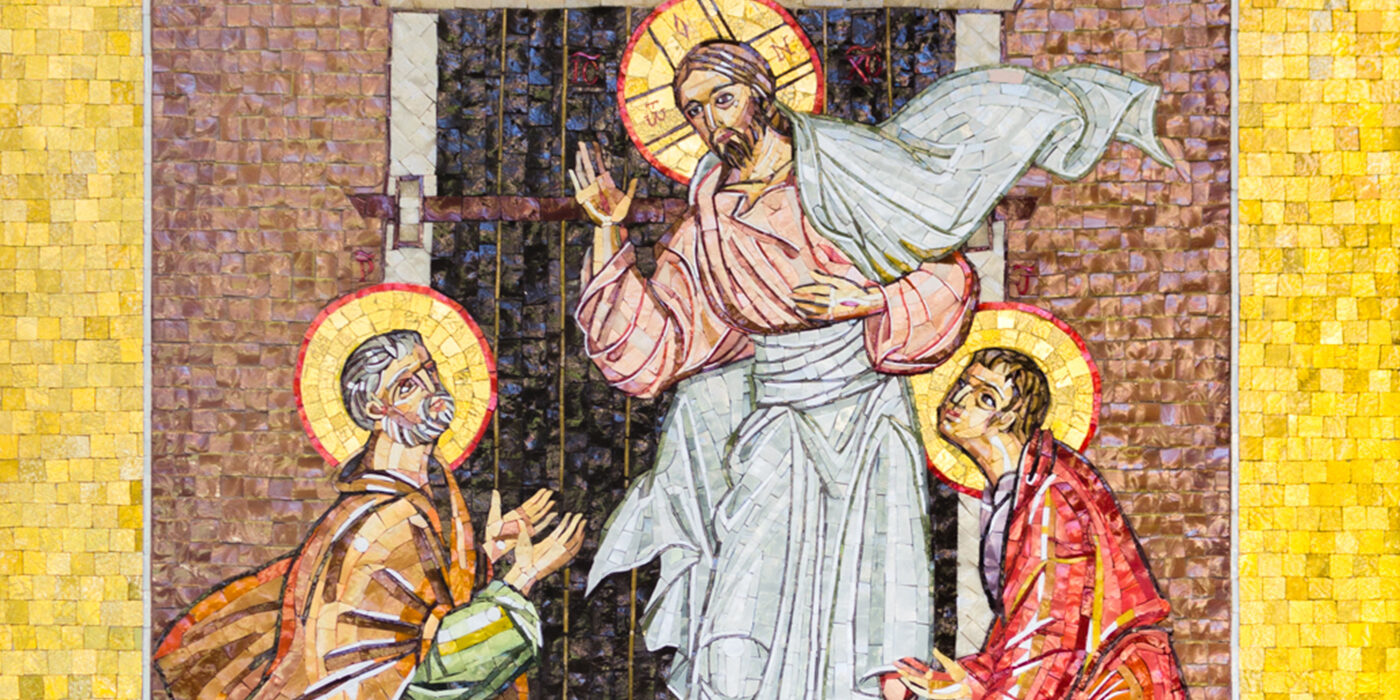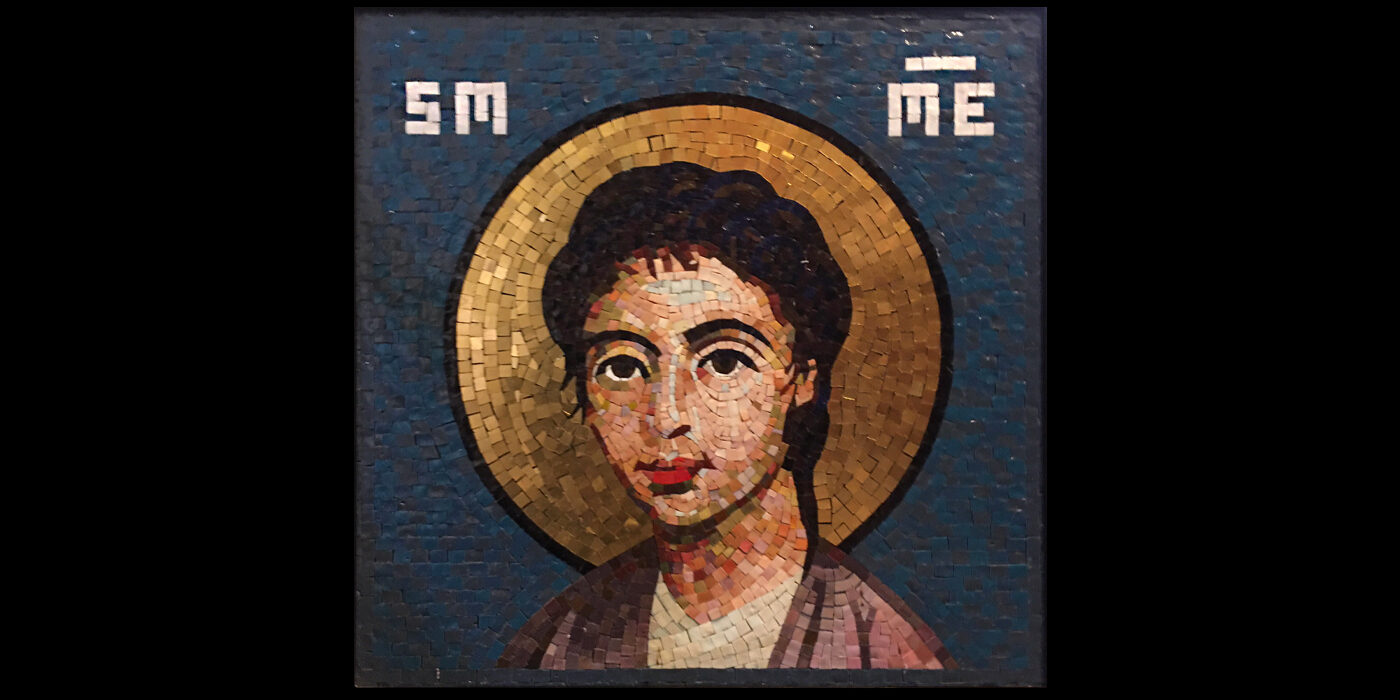Fall 2020 Virtual Exhibit: Louisa Jenkins and Friends: Sacred Mosaic Arts
What you will find here and why
The historical beginnings of mosaic art are seemingly lost to us. The oldest known examples of this workmanship are in the Near East and date from about 1300 BC. The Roman Era saw popular mosaic arts employed extensively throughout the empire for state and private use. In the Christian era, the art flourished from the fourth to the fifteenth century in the Eastern and Western Church. Ironically, a decline ensued partly because of improved technology. As glass tiles became available in many colors, temptation to copy the ancient works also increased. When imitation of the masters became acceptable, the need for creativity in the medium diminished, though many masterpieces continued to be made, especially for the Church. In the second half of the 19th and first half of the 20th centuries, the Western Church experienced a revival in all the principal art forms, observed in such movements as the Benedictine School of Art at the Abbey of Beuron, Germany. This revival of the arts shows up in a number of Mount Angel Abbey’s treasured art works, notably those by Jean Lambert-Rucki, Isabel and Edith Piczek, and, of course, the mosaics of Louisa Jenkins, all with mid-century influences. It was here in the 1950’s that William Justema, artist-in-residence at Mount Angel Abbey at the time, suggested Louisa Jenkins of Big Sur for a commission to create a set of mosaic Stations of the Cross for the newly completed Saint Joseph Chapel. After the dedication of the Stations on July 19, 1953, the monks established Angelico Mosaics at the Abbey. The rest is history!
The virtual exhibit was displayed October 1, 2020 through January 4, 2021

